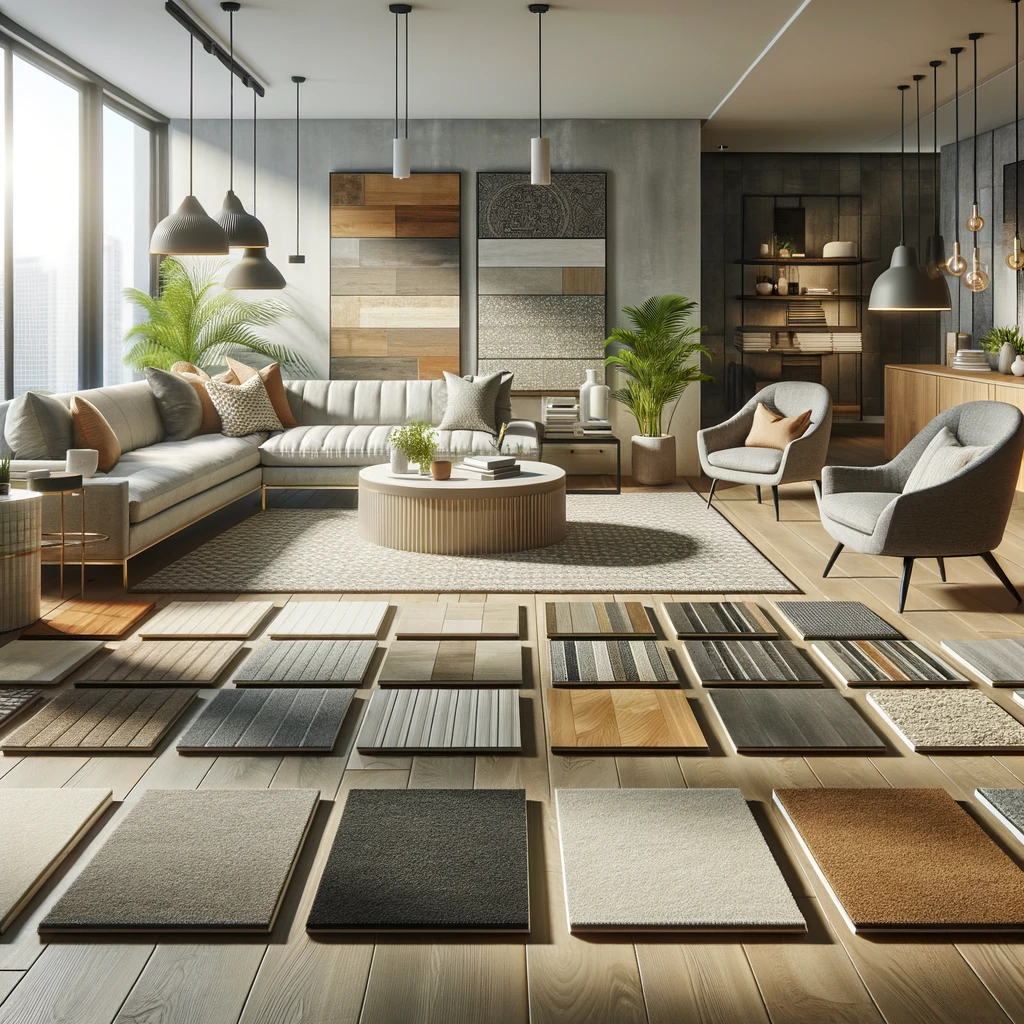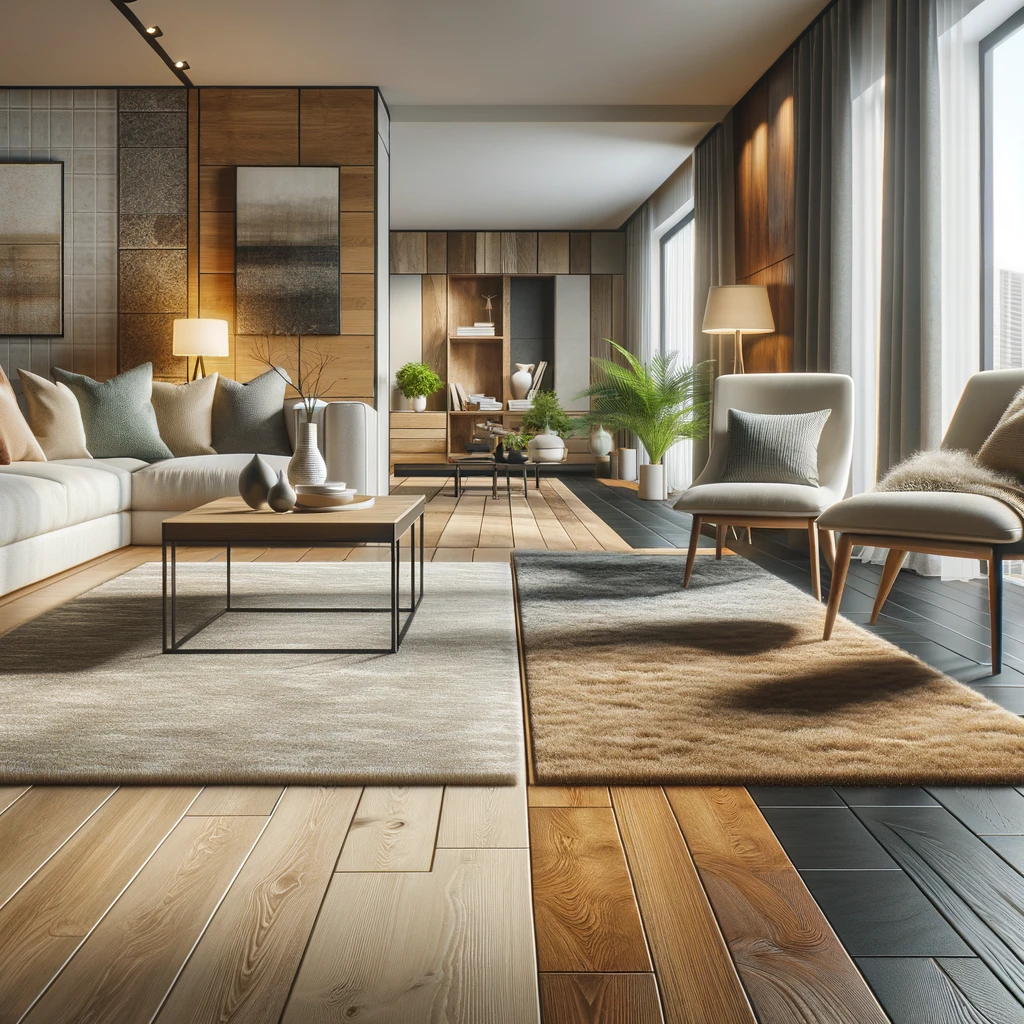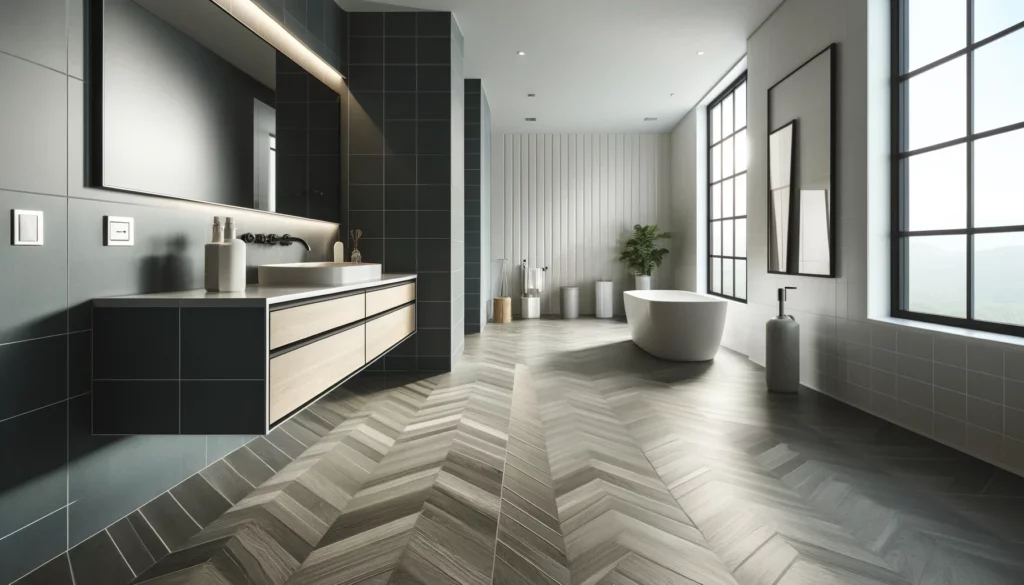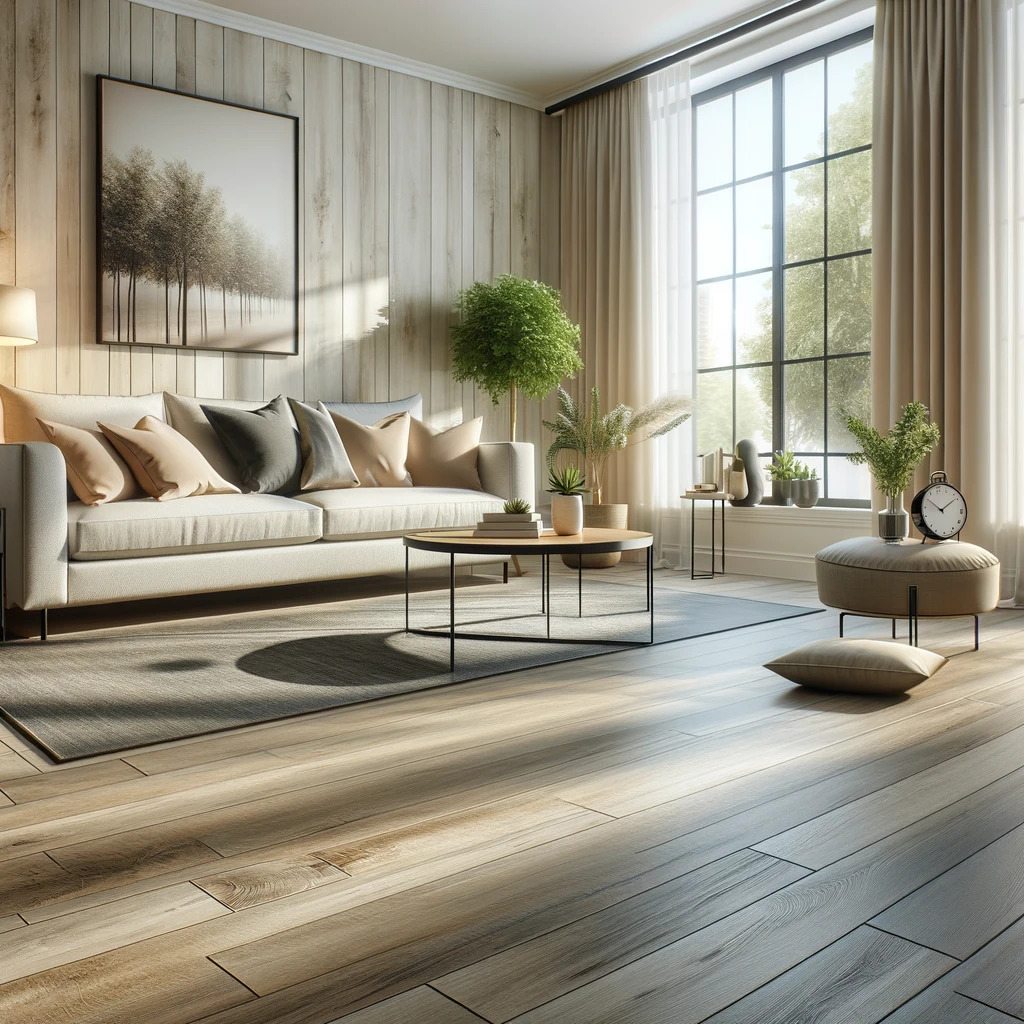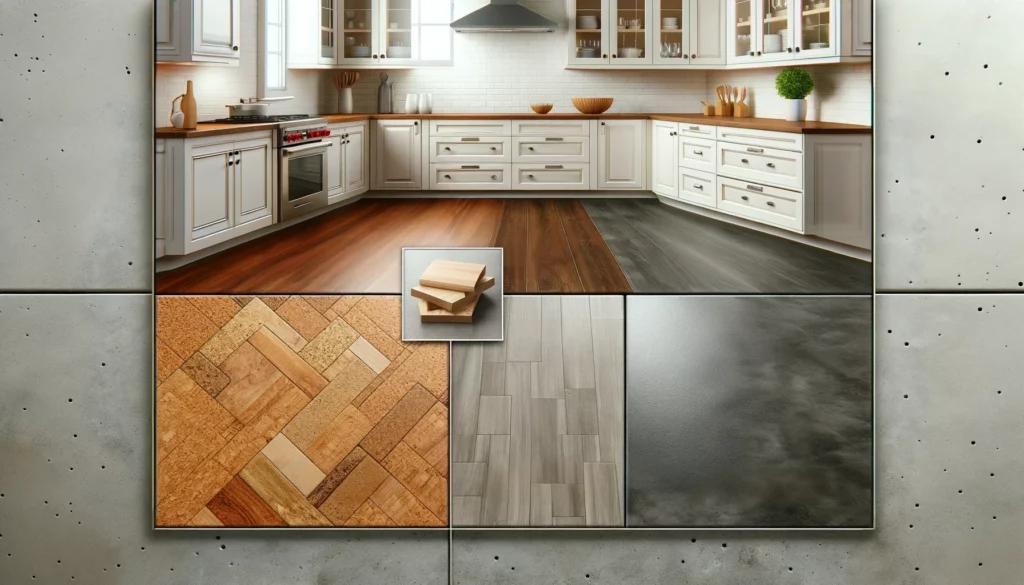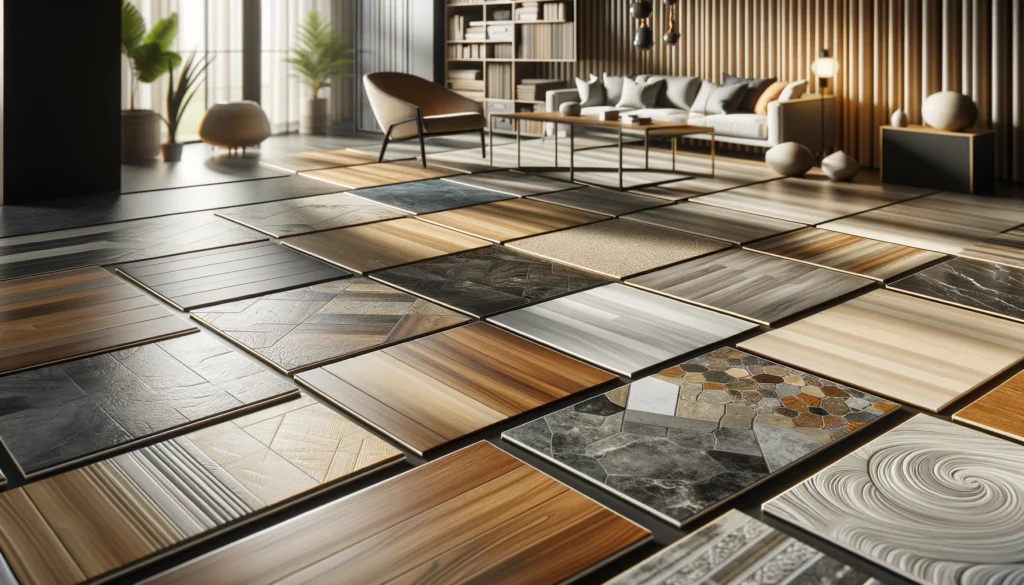A Comprehensive Guide to Finding the Perfect Fit for Your Home|What is the Best Flooring for Your Home
Selecting a right flooring is not just about the color and pattern you enjoy. Your floors set the tone for your home design; it is the first visual and tactile experience of them when walking into a room. This is an investment that you will have for years to come so think about it before you do anything.
It is an important process to select this ideal so you have to know all about factors affecting the selection of tiles for flooring. Of course, the first things to keep in mind will be your budget since flooring costs can vary greatly depending on the material you choose and installation difficulty.
Considering that, your lifestyle matters too. Is your home a hive of activity with children and animals running riot, or is it a calming space? For those living in a house with lots of foot traffic or at high-risk for spills and accidents, durability and maintenance needs should also be considered.
This is where the desired aesthetics also matter a lot. Do you like the way hardwood flooring adds warmth and charm, or are you a fan of the polished looks possible with tile? Every kind of flooring lends a special visual appeal and might significantly impact the feel and mood of your home.
The good news is that today, there are plenty of choices in flooring materials; all options possess their own plusses and minuses. We are going to break down the most popular options for you, so that will help guide you in navigating with making your decision about what is best for your home.
We will do a deep dive into all of the following flooring types, from the classic appeal of hardwood to the functionality on a budget with laminate, the waterproof versatility with vinyl, creating durable finishes with tile and even looking at how carpet can be as comfortable as it is stylish. We investigate how they’re built and installed, durability, maintenance requirements, cost considerations and aesthetics to bring you the ultimate guide to finding the perfect fit for every room in your house.
The Hardwood Flooring Timeless Personality
Hardwood flooring has been a sign of elegance, comfort and enduring style for centuries. Its striking beauty coupled with its unparalleled endurance make it a popular choice for homeowners adding elegance and character to a room.
Solid hardwood, which is true to its name, and engineered hardwood are the two main types of hardwood flooring. All three have their own USPs, and cater to different requirements and pocket depths.
Classic Choice Solid Hardwood Flooring
Solid Solid hardwood flooring is made from a single piece of lumber, typically oak, maple or cherry milled into planks. They also simply get nailed or stapled into a subfloor, which is the way they are installed in order to create such durable and long-lasting results.
Solid Hardwood Flooring Benefits Solid hardwood flooring has undeniable benefits. With greater durability than most, you are getting a resilient product that will last for years of continuous use. The aesthetic makes it a timeless classic that will always be in style, meaning you can raise the value of your home and have another selling point to potential buyers. Not only does solid hardwood offer sandable and refinishable features that can add a whole new life, or two or three, to the potential of the flooring.
That said, solid hardwood flooring is not perfect. This makes it less practical for high-mess areas such as kitchens or bathrooms since it is also moisture-prone. However, it is also vulnerable to being scratched and dented like any other wood floor, especially in high traffic areas and homes with pets. Solid hardwood flooring is also the priciest choice in general attributes and addressing costs.
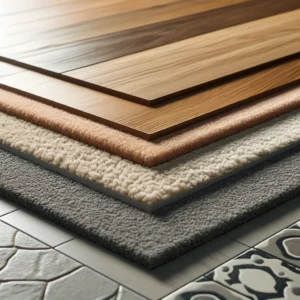
Stability And Moisture Resistant Engineered Hardwood Floors
Engineered wood floors may be a more stable and moisture-proof option (with solid hardwood). It is made from several layers of wood veneers glued together cross-layered, then pressed under a high pressure and covered with a solid wood lamella. It allows for increased stability due to the cross-grain layering which cuts down on expansion and contraction caused by normal fluctuations in temperature and humidity.
Another type of wood flooring that gets a little assistance is engineered hardwood flooring. It can be glued, nail or even floated over an existing subfloor which makes it a more versatile option for various applications. Engineered hardwood also comes at a cheaper price point compared to solid hardwood, making it a cost-effective solution that still delivers good quality.
The top layer of hardwood in engineered hardwood is much thinner, which means that it can only be refinished a certain number of times and to a lesser extent than solid wood. Although the wear layer thickness can allow for a few regular refinishings in its lifetime, it is limited.
Here is a chart to demonstrate the main differences between solid and engineered hardwood:
| Feature | Solid Hardwood | Engineered Hardwood |
|---|---|---|
| Material | Single piece of lumber | Layers of wood veneer |
| Construction | Solid plank | Cross-layered & bonded |
| Durability | Very High | High |
| Cost | High | Medium-High |
| Moisture Resistance | Low | Medium |
| Refinishing | Multiple times | Limited times |
Cheap alternative to hardwood: laminate flooring
Laminate flooring comes in many beautiful and durable colors to bring that realistic look and feel of solid hardwood. Economical for more homeowners on a budget, Laminate floors fall into a great bang for the buck category. Tapiflex beautifully features a realistic wood grain effect that you cannot take for anything but real, on the other hand Tapiflex offers coverage to any room that needs updating with durability matched with inherent stylish appeal.
How laminate flooring is built In the image above, a high resolution photograph of wood grain is layered over core layer which can be made from typically made from high-density fiberboard (HDF). It provides you with a stability and power. A clear, protective layer on top of the image, protecting it from scratches, scuffing and everyday wear and tear.
The primary advantage of a laminate floor is, quite simply, ease and cost. It is much less expensive than solid and engineered hardwood, which makes it more appealing to budget-minded homeowners.
Durable and Stylish Laminate Flooring
Besides budget-friendliness, laminate flooring is highly durable — specifically with scratch and stain resistance. The wear layer is what protects the surface from daily abuses making it a great option for families with kids and pets. In addition to the ease of installation that laminate flooring provides Planks normally have a click-lock mechanism which makes it easy enough to install yourself.
On top of that, laminate flooring is available in countless designs imitating different types of wood species with a plethora of colors and plank sizes. This diversity helps youyou to land on the optimal fit for what meshes with your decor, elegantly mixing into your living space.
Laminate flooring factors to consider: Dampness and Underfoot Feel
Although laminate flooring has many pros, you’ll also want to weigh the following cons. Regular laminate is not waterproof, so it will be less useful for wet places like bathrooms and kitchens. Infiltration of the seams (including wheel and bumper surfaces) with water will cause the core to swell, resulting in irreversible damage.
Fortunately, there have been some great developments in flooring technology lately leading to water-resistant laminate options. These feature a treated core and tighter seams for added moisture protection. The most innovative of all laminate floors is water-resistant laminate flooring. Now you can enjoy the ease-of-maintenance and durability of laminate in places where moisture would be a problem for other types Water-resistant!
The underfoot feel is something else to keep in mind. Despite being long-lasting, laminate flooring is thinner than real wood and may feel cold or too hard compared to hardwood floors. Firmer underfoot feel — and that might worry some who prefer a cushier surface.
Vinyl Flooring: The Perfect Wood Look coupled with Durable Vinyl
In recent years, vinyl flooring has become very popular among homeowners who are in search of an adaptable, durable and simply maintainable option. The range of styles and their affordable price combined with superior performance in moisture, just to mention a few makes this tile ideal for everything from kitchens & bathrooms to living rooms & basements.
There are two major types of vinyl flooring: sheet vinyl and luxury vinyl plank (LVP). They each have their benefits, perfect for different use cases and designs.
Steel Vinyl Flooring: No seams and waterproof
Sheet vinyl flooring is popular because it can be installed seamlessly to create a waterproof surface, making it perfect for basements or any area that might suffer spills and moisture. It usually comes in large rolls, 6 or 12 feet wide, and is cut to room length specifications. This save it form seaming with only the outer parts of the room needing seams, and is thus stable enough to withstand water damage.
Sheet Vinyl -Most Durable For Sheeted Materials-Sheet vinyl is known for being cost-effective and low maintenance. In fact, it is among the most inexpensive flooring materials there is, so it works well for someone looking to budget their way through a home improvement. It is super easy to clean, all you need most of the time is a simple sweep or mop.
Sheet vinyl is what we first though of here but manufacturers have be able to produce a diverse range of colors and patterns for the sheet materials. Today’s sheet vinyl can mimic the appearance of hardwood, stone and tile — providing a more refined look that fits maleable decorating styles.
Luxury Vinyl Plank (LVP) Flooring: Style and Durability
One that has gained much attention in recent years is luxury vinyl plank (LVP) flooring because of its ability to mimic the look of real wood while also providing incredible resilience. It arrives as specific planks, much like the hardwood alternative, and has a photographed wear layer that captures incredibly precise impressions of timber grain marks, surface texture and variances within each plank.
LVP flooring is naturally water-resistant and a great option for areas of the home susceptible to spills or moisture. The quick summary — most LVT is water-resistant, and has a waterproof core along with a wear layer that protects it from everyday use. It is also resistance to scratches making it a good choice for pet owners and young families as well. It is extremely durable and can stand up to the wear and tear of a lot of foot traffic without looking very warn.
Key Differences Sheet Vinyl vs LVP
Here are the unique traits of sheet vinyl and LVP:
| Feature | Sheet Vinyl | Luxury Vinyl Plank (LVP) |
|---|---|---|
| Format | Large rolls | Individual planks |
| Installation | Seamless (except edges) | Click-lock or glue down |
| Water Resistance | Very high | High |
| Durability | Moderate | High |
| Style/Appearance | Can mimic natural materials | Realistic wood-look |
| Cost | Low | Medium |
Durable and Stylish: Tile Flooring
Tile flooring has been known for its excellent strength, high waterproofing capability and a way to lift style of any location. Between classic ceramic and porcelain, to more natural stone tiles, this type of flooring options holds a wide range for different needs and styles.
Types of Tile: Ceramic, Porcelain and Natural Stone
Ceramic tiles are made of clay and other natural materials, which is heated up in a kiln at very high 1200-2000 °C to make the hard-wearing layer that will come with your home as you can. Available in countless colors and patterns, not to mention every shape or size imaginable.
Porcelain tiles are a form of ceramic tile fabricated with finer clays and fired at much higher temperatures, resulting in harder and less porous products. They are highly durable and resistant to stains, which is why they have become a popular option for all of the busiest rooms in the house.
Granite, marble and slate natural stone tiles are all inherently beautiful materials that lend a high-end luxurious appeal. Alight Marble tile offers natural variation and texture for which each piece is one-of-a-kind. They last a long time but do need to be sealed to keep them safe from containing scratches and spots.
Benefits of Tile Floors | Water Resistance and Easy to Clean
One of the greatest aspects about tile flooring is its incredible water resistance. The only downside is that porcelain and (most) ceramic tiles are both waterproof: perfect for the bathroom, kitchen or areas where you might be mopping or there could be a splash hazard.
Although natural stone tiles are long-lasting, in a few cases they have to be sealed in order for them to really become water resistant.
It is very low maintenance: Cleaning tile is as simple and easy as sweeping dust particles away with a broom. It wipes clean easily because when its non-porous surface prevents dirt or infections from being released. Most of the time, sweeping or vacuuming them regularly and mopping occasionally is enoughleave tile floors clean.
Slip Resistant Grout Lines
Tile flooring offers many benefits, but before deciding on whether it is right for you or not — consider a few things first. One of the most important factors you will want to consider when shopping for bathroom safety mats is Slip resistance, especially in a wet area. Pick tiles that have either a textured surface or higher slip resistance rating to reduce the chances of slipping.
Even the grout lines, which are just the doom between any tiles, can become susceptible to staining and discoloration over time. One solution for preventing stains is to seal the grout as soon as the floor has been laid. The grout lines will need occasional cleaning and upkeep, but overall they should stay looking newer for longer.
Tile flooring is hard underfoot and may be cold in colder climates Underfloor heating systems can reduce this issue by providing radiant warmth that can improve the overall comfort of tile flooring.
Tile price per sq. ft -like everything something Shekar it vary from material to another, quality of goods and complexity of installation. Ceramic tiles usually cost the least money, with porcelain and natural stone tiles being more costly. Laying cost is also dependent on the area of complex detailing in the tile layout.
Carpet Flooring: Warm and Snug Underfoot
Carpet flooring provides an ideal mix of comfort, warmth and style to your home which helps turn any space into a warm and welcoming retreat. When you walk on it, it is underfoot soft and cushy- invitingly plush works especially well in the bedroom or living room — any place where a warm airy surface is desired.
Types of Carpet Fibers: Which One to Choose
Carpet made from different fibers — Nylon, PET, Olefin and Triexta — each offers a unique level of durability & stain resistance.
Nylon carpet is the most popular because it performs so well and is very durable, resilient and abrasive. A good option for high-traffic areas and families with children and pets
Wool is a soft, warm fiber that resists stains. This is a top-tier choice renowned for its natural appearance and ability to maintain it well over many years.
Polyester – This synthetic fiber is soft, stain resistant and generally more affordable than nylon or wool. Perfect for Bedrooms & Light Traffic Areas
Carpet Pile Styles Affecting The Way It Looks And Act
When we speak of a carpet pile, what is usually meant is the loop and surface texture of the fibers in the carpet. There is a difference in the height of various pile styles which affects how well it holds up, or cleans.
Looped Pile carpets have loops where the fibers are not cut, this can also include Cut and Loop styles which combine a construction of both cut and looped pile. They feel good on your feet, and they give a sumptuous look, but can tend to show footprints and vacuum marks.
Advantages of Carpet Flooring: Sound Absorption and Warmth
Carpet is wonderful at sound absorption, helping reduce the level of noise and thus contributing to a more peaceful space. It is therefore most suitable for bedrooms, home theatres or any space that may require some noise cancellation.
Carpet offers warmth and insulation, helping to create a cozier more comfortable atmosphere in any room – especially during the fall and winter. Its carpet cushion creates a luxurious underfoot feel and enhances the ambience of any living space.
Stain Resistance Since carpet is a woven fabric, spills seep into the threads of the carpet unlike carpet stains that sit on top of hardwood or vinyl flooring.
Comfort and warmth are benefits carpet flooring offers while on the other hand you might want to take into consideration its tendency to stain and cleaning requirements. Carpet may be the most prone to stains, especially for light colors and specific types of fiber. Selecting stain-resistant carpets and having them treated with a carpet protection solution will reduce staining.
Vacuuming A must for keeping dirt, dust and debris off. Aside from this, a deeper clean, such as steam cleaning or hot water extraction cleaning are often performed periodically to refresh the appearance of carpet and remove embedded dirt.
Allergies are also a problem with carpet flooring. The fibers in carpet can be a collection spot for dust mites and other allergens, possibly setting off allergies or asthma among those who are sensitive. It is dealing with those severe allergies even more effectively, and it can be reduced by choosing hypoallergenic carpets along with a vacuum cleaner that has built in HEPA filters.
Finding the Right Floor: A Customized Choice
As you start evaluating options and making decisions on your new home flooring, it is an important note that the ‘best’ choice is really in the hands of the owner. There is no one-size-fits-all solution here, as the best flooring for you will depend on your specific needs, lifestyle appreciation of material quality and long-term value.
In this guide, we went through the 7 most searched flooring options taking a close look into their peculiarities, features and general takeaways. You should then return to the previous chapters for each type of flooring in order to establish those similar and distinct attributes of each floor that most closely adhere to your needs and how you use them.
Cost and Budgeting for a New Floor
What is also helpful in determining the right flooring options for you, is your budget. Do not forget to see installation charges. For example, solid hardwood flooring is relatively expensive while laminate and sheet vinyl are budget-friendly alternatives.
Lifestyle/Durability Want List
More than anything else, the wear needs of your flooring will be determined by your lifestyle. Opt for choosing floors that resist scratches — like laminate, LVP or tile if you have a home filled with children and pets. Durable vinyl flooring performs well in other high-traffic areas like hallways, living rooms.
Preferences for Maintenance and Cleaning
Think about whether you want to keep your new rug clean and how much care you are prepared to give it. Tile and vinyl flooring are relatively easy to clean with some mild maintenance, while it takes regular vacuuming and sometime deeper cleaning for a carpet. You want to refinish your hardwood floors every few years so that they look good.
Style and Aesthetics
FLOORING Your desired aesthetic will be the next biggest factor in your flooring decision. If you love the ageless quality of hardwood, look into both strong as well as synthetic possibilities. Laminate – Best For Budget-Friendly Wood Look-alike / People Who Love The Look Of Wood But Want Something More Durable Than Engineered. Tile: a clean, stylish look; carpet: warm and cozy
Seeking Professional Guidance
Go to flooring stores, look at samples and get information. Specialist flooring experts can offer you bespoke advice — to make sure that you find the best possible solution in your search through so many products on the market. They can evaluate your requirements, propose ideal products and respond to any questions you have.
Frequently Asked Questions About Choosing the Best Flooring for Your Home
The Best Flooring for High Traffic Areas
To cope with all of that foot traffic, you may want to think about flooring that has awesome durability and resilience.
A few great flooring options of the moment are porcelain tile, engineered hardwood and high-quality laminate (you can get some pretty real looking grain patterns for $2-$3 per square foot at this point) with an AC rating of 4 or higher.
They are durable enough to handle high traffic and are undisputed kings in the realm of scratch, dent, and wear resistance.
Is your flooring choice best for houses with pets?
If you have pets, they can be hard on a floor so pick one that will take their claws and little accidents without coming off.
LVP (luxury vinyl plank) is a great water-resistant, scratch-resistant and easy maintenance option.
Scratch-resistant coatingsTop-of-the-range laminates are made with an extra thick top layer that has a scratch resistant coating.
Engineered hardwood with a good quality finish is a great option and will give your space the appearance of wood without it looking too fake.
What are the Best Flooring Option for Moisture Prone Areas like Bathrooms, Kitchens etc?
Waterproof Flooring For More Moisture-Prone Areas
Porcelain or ceramic tile is a timeless option that provides water resistance and easy care.
Others, such as vinyl plank and laminate (including waterproof varieties), deliver both practicality and flair.
In addition to under grade, solid hardwood should also be avoided in moist areas.
